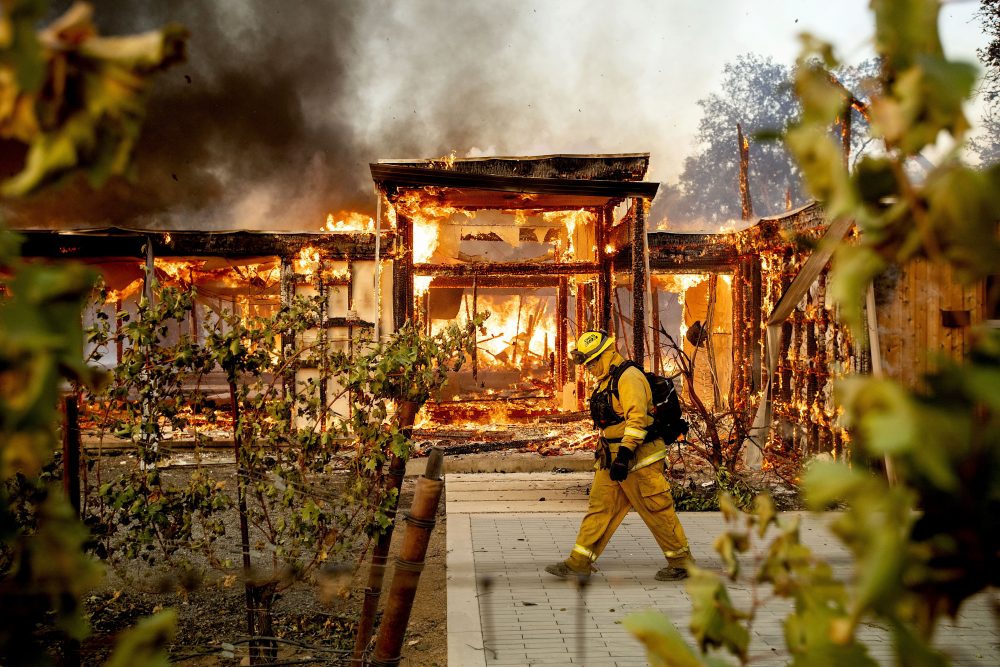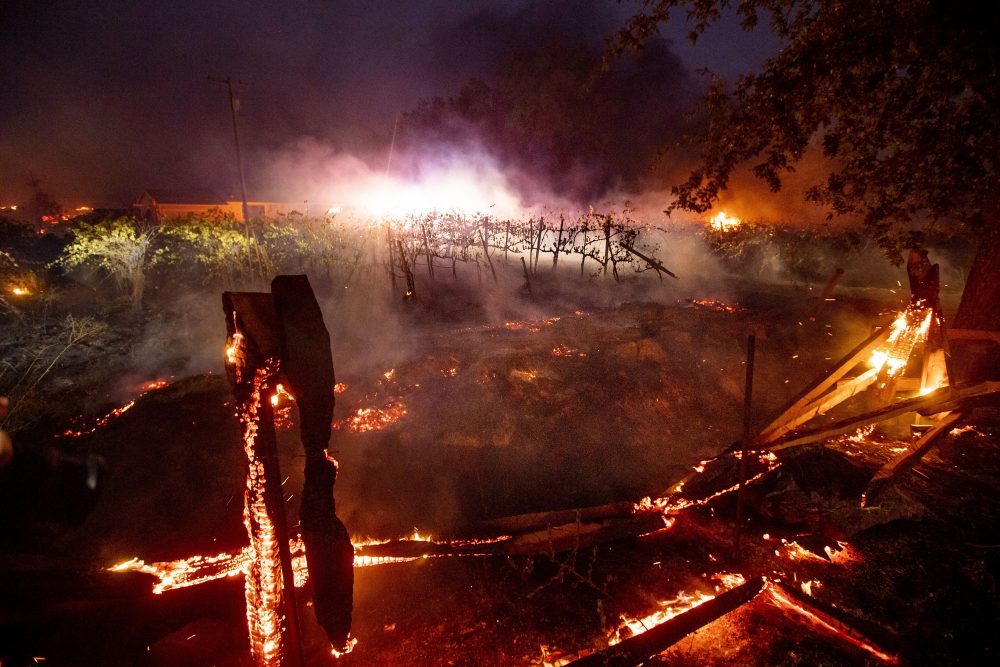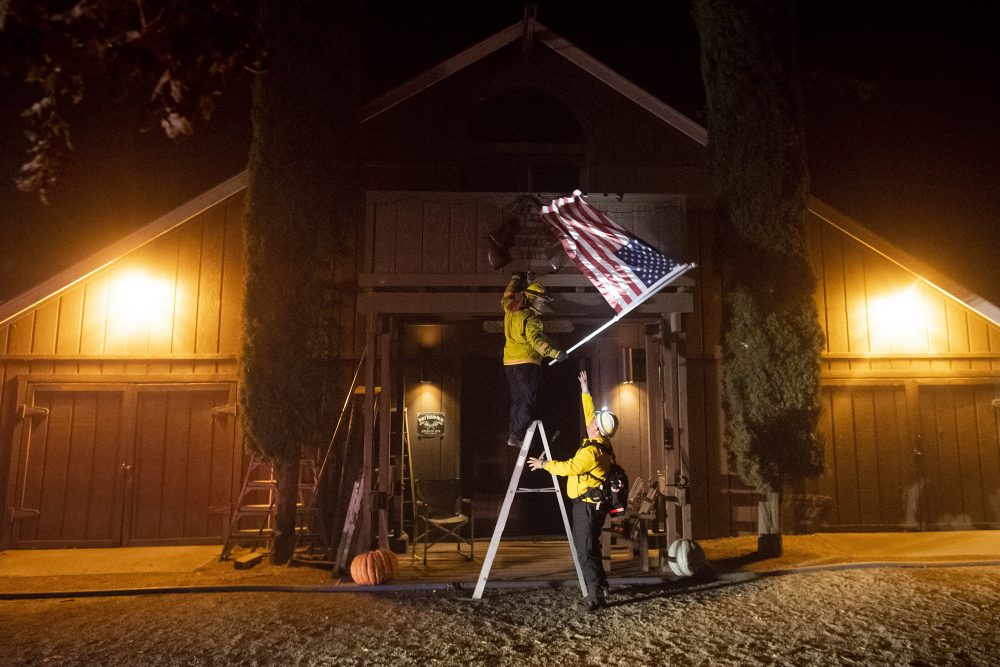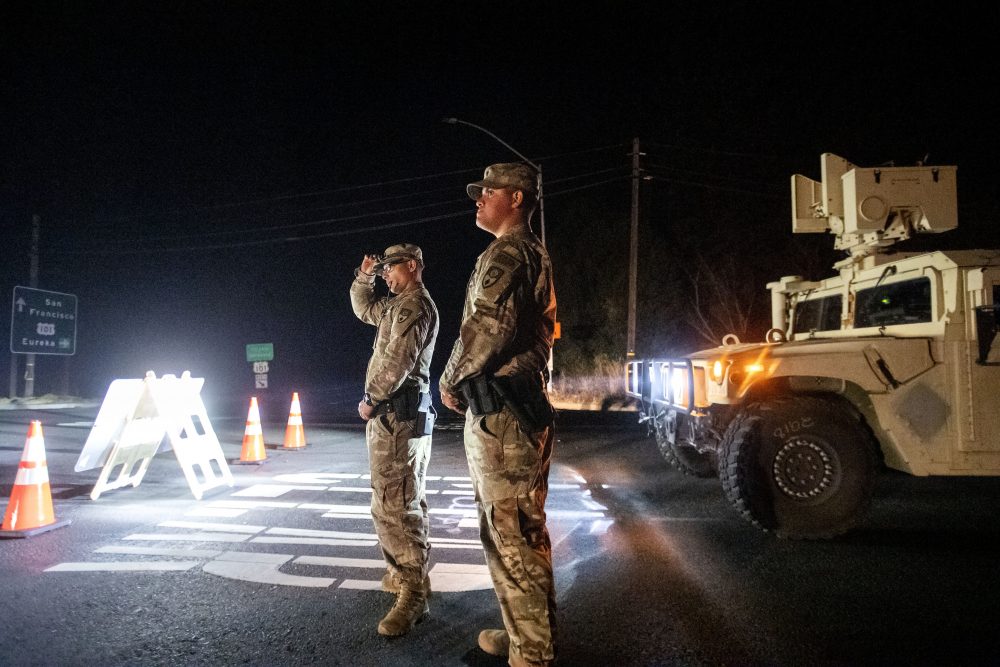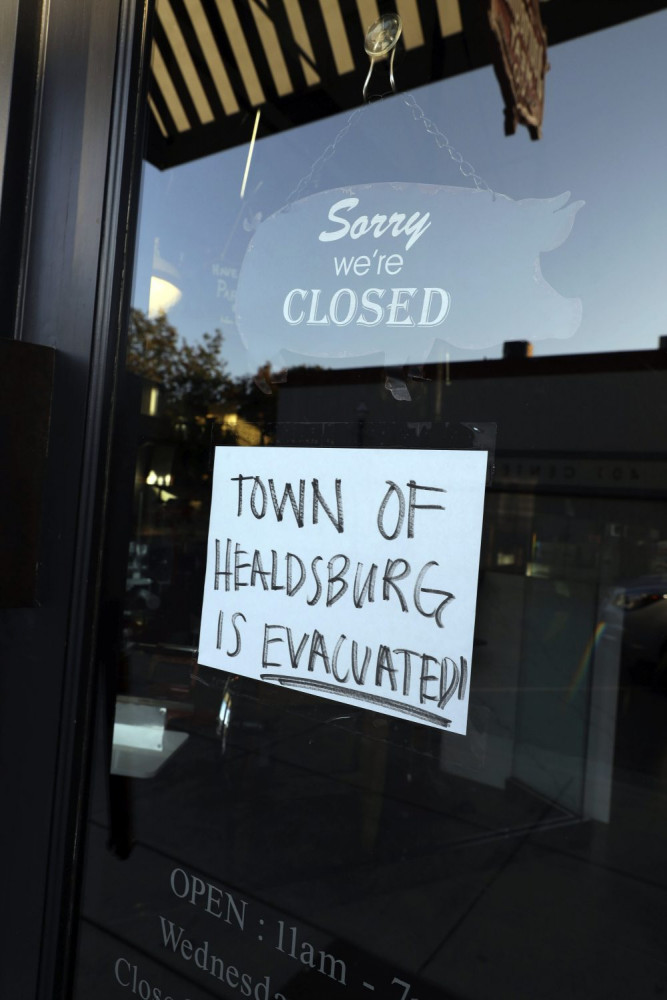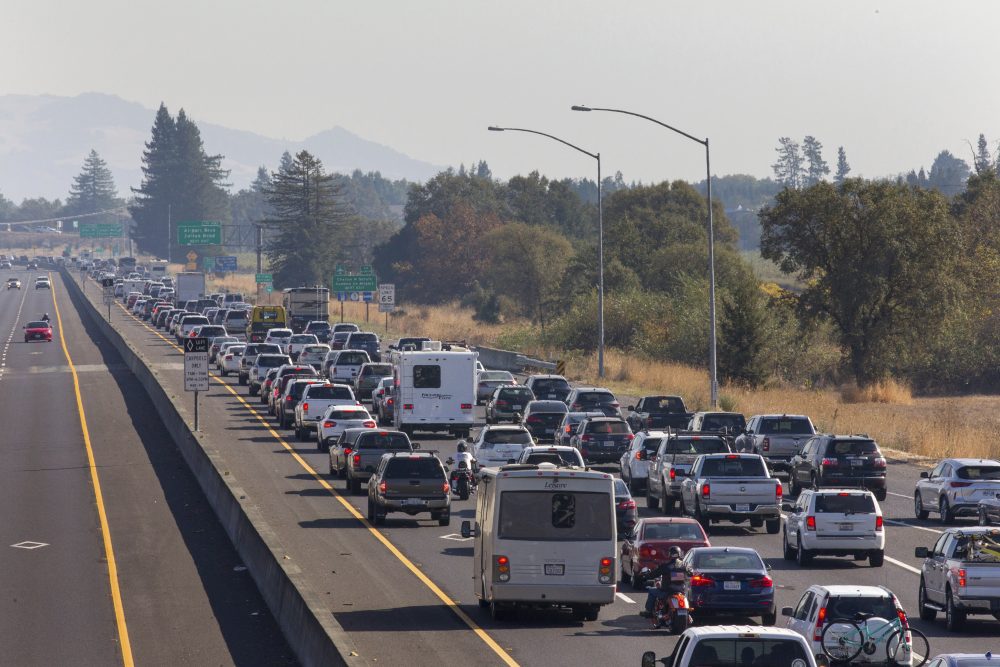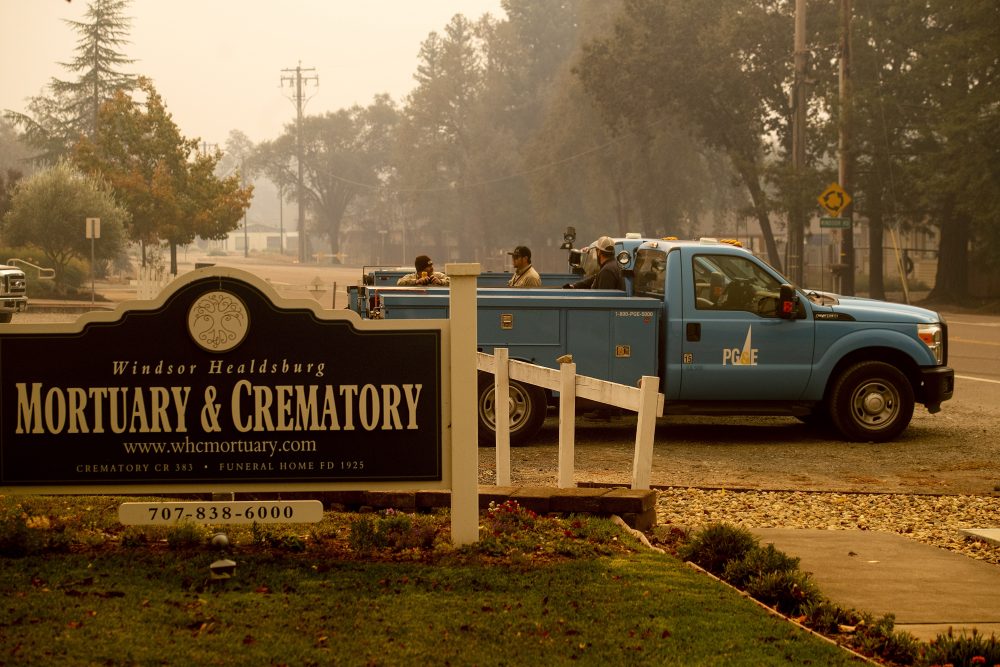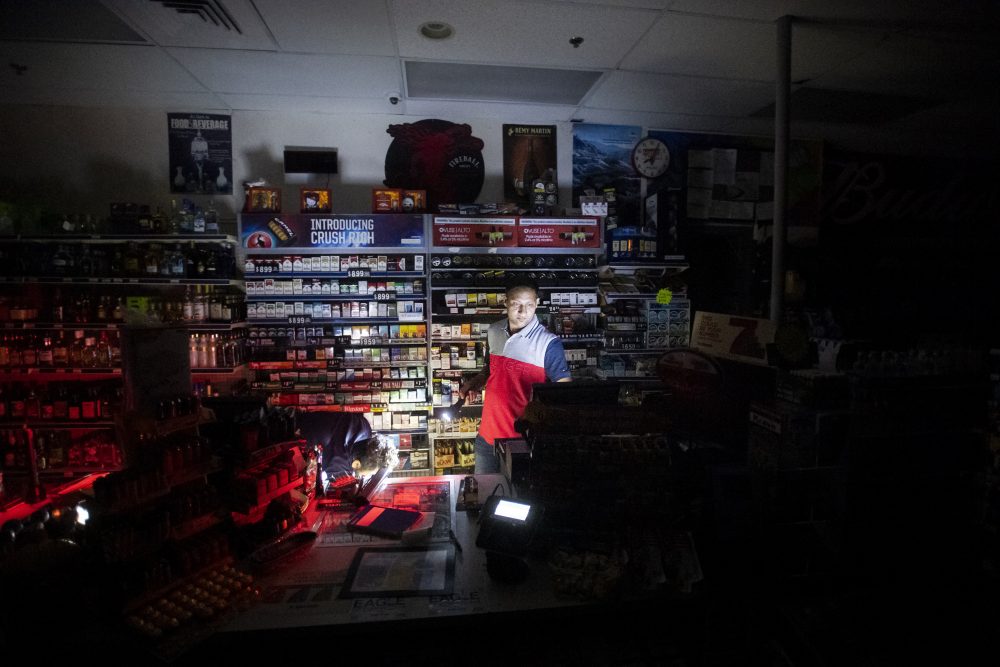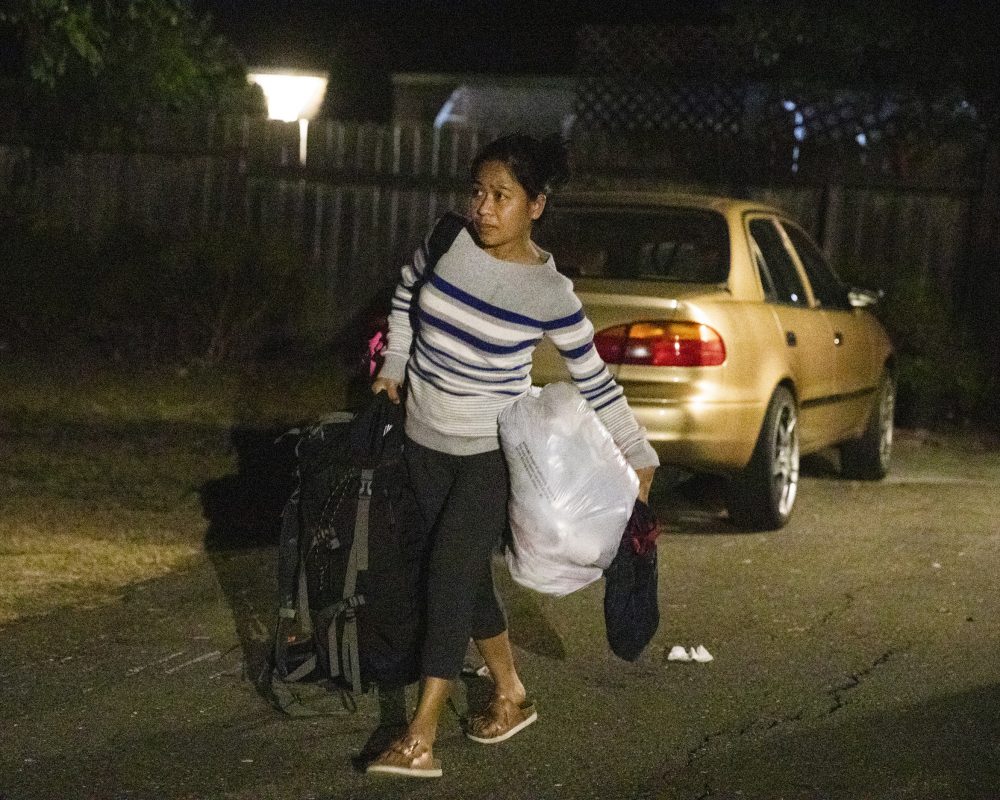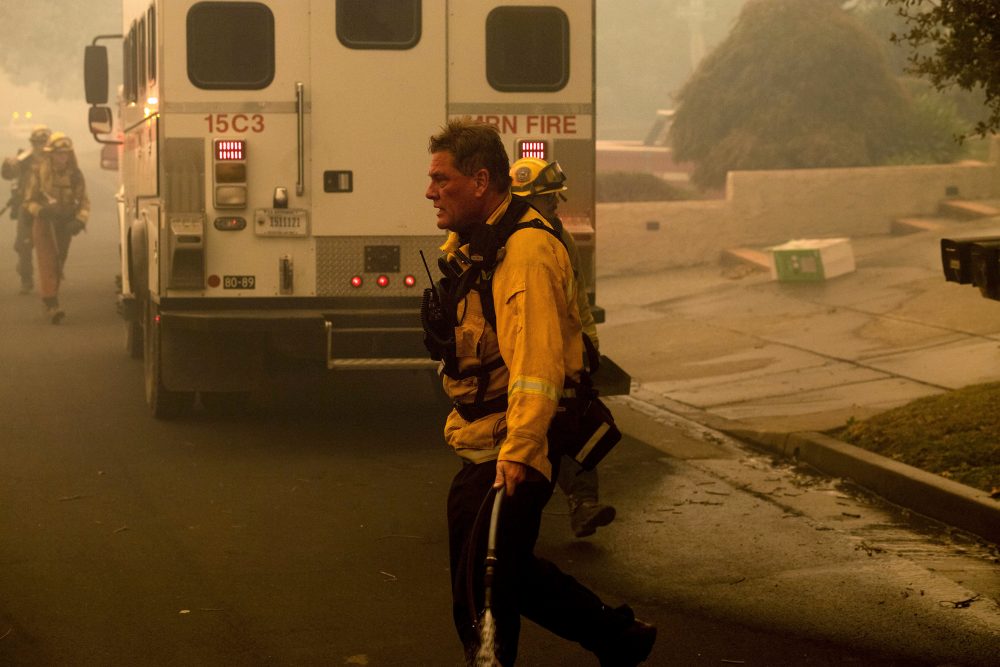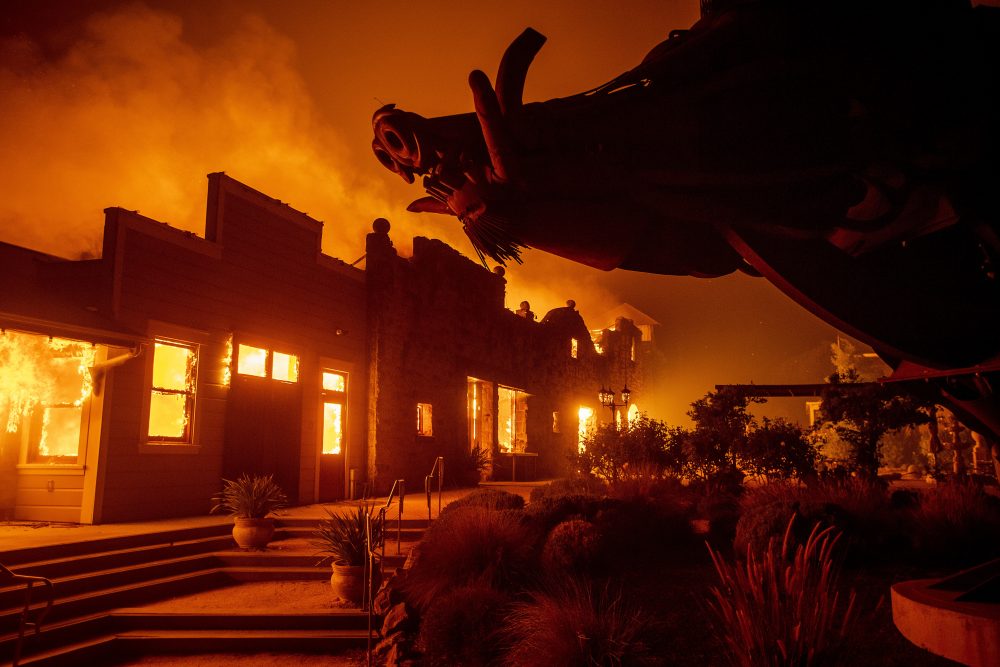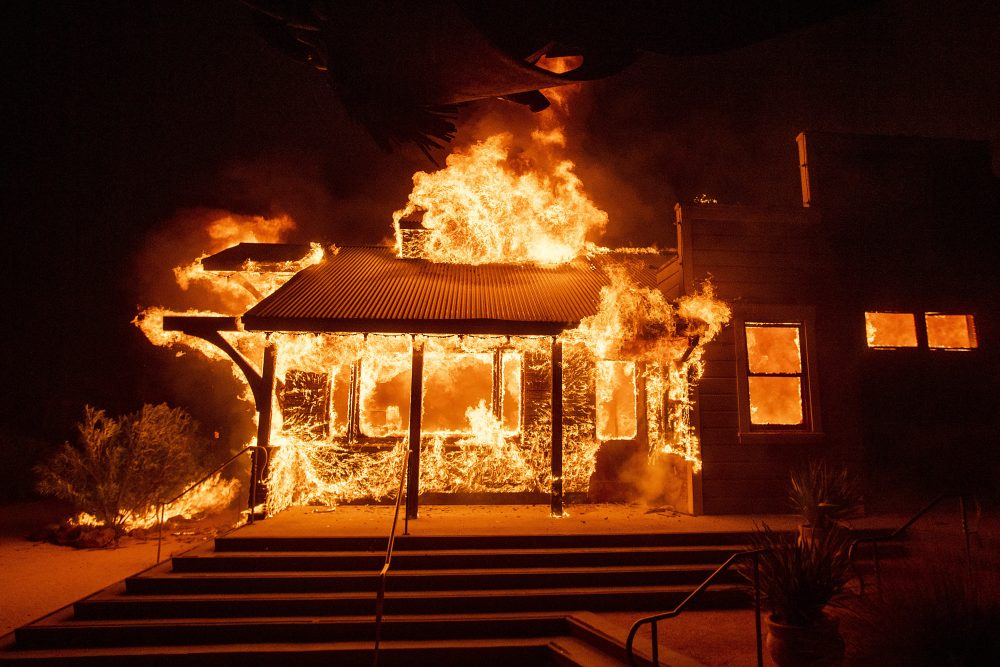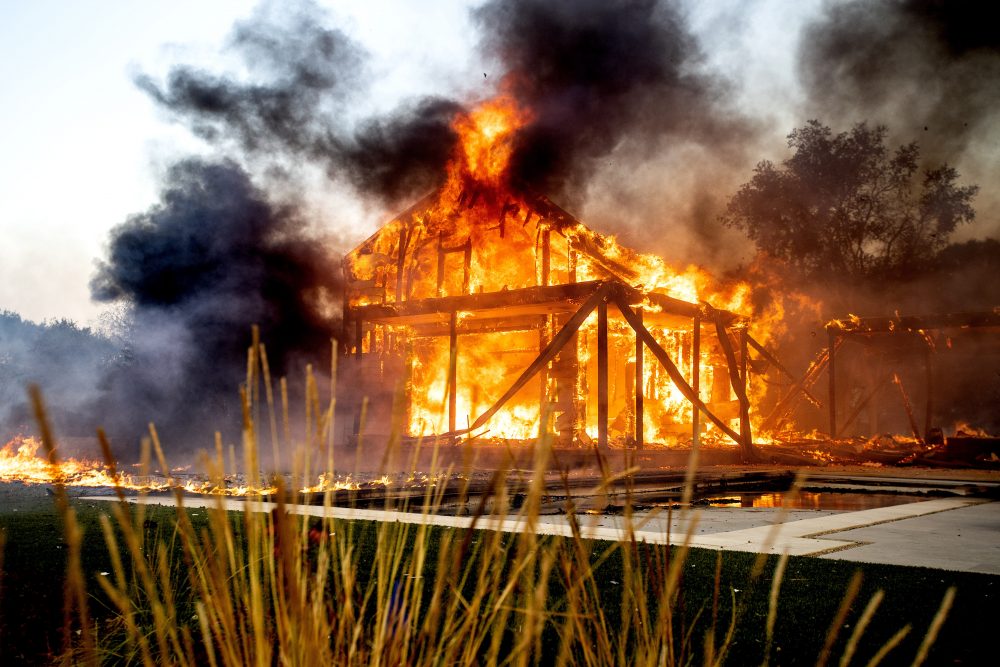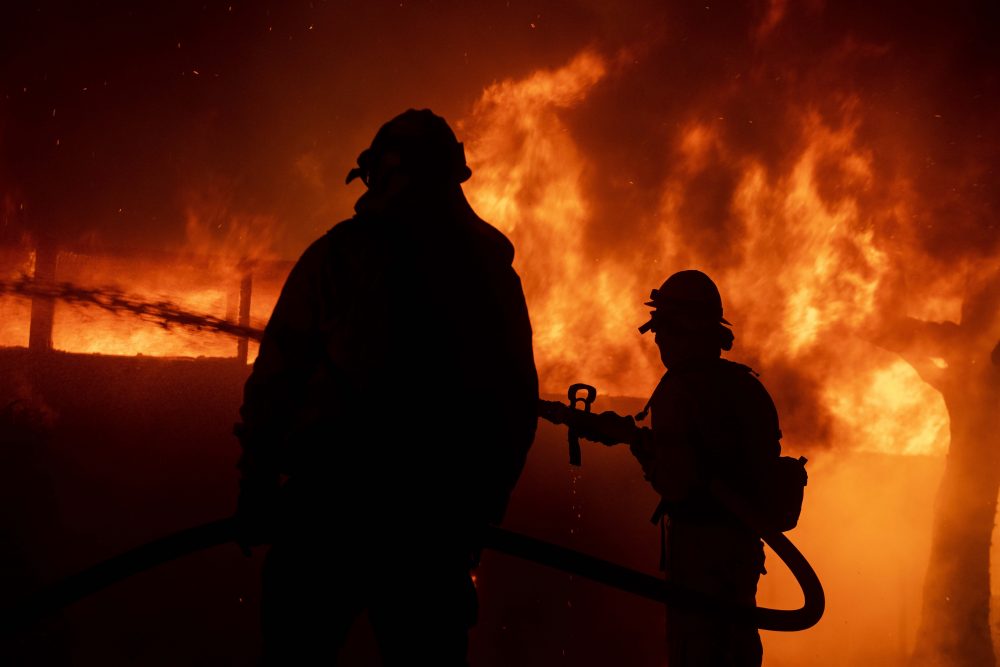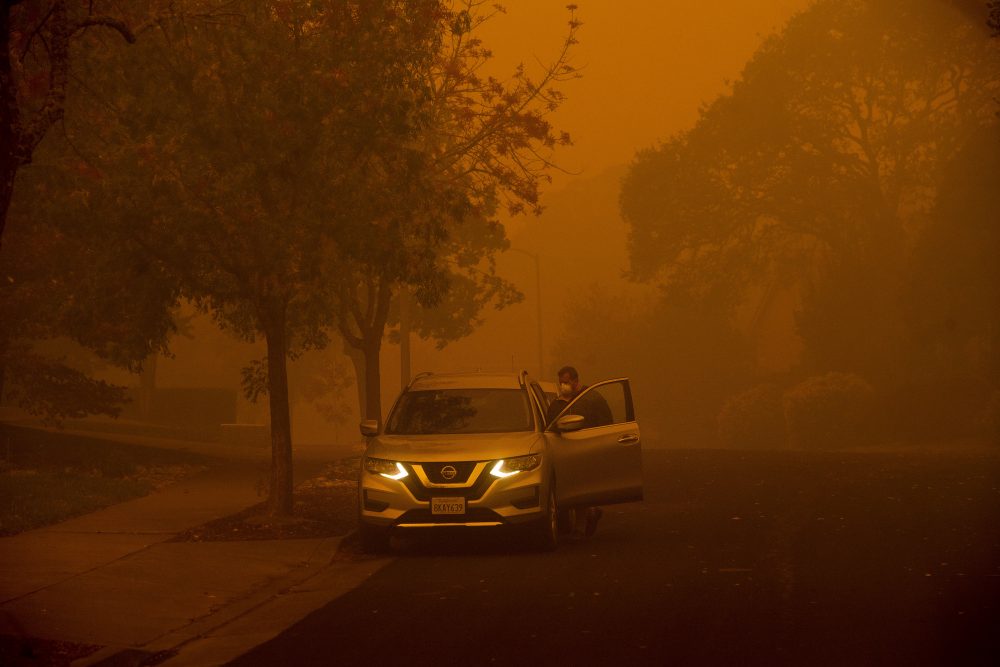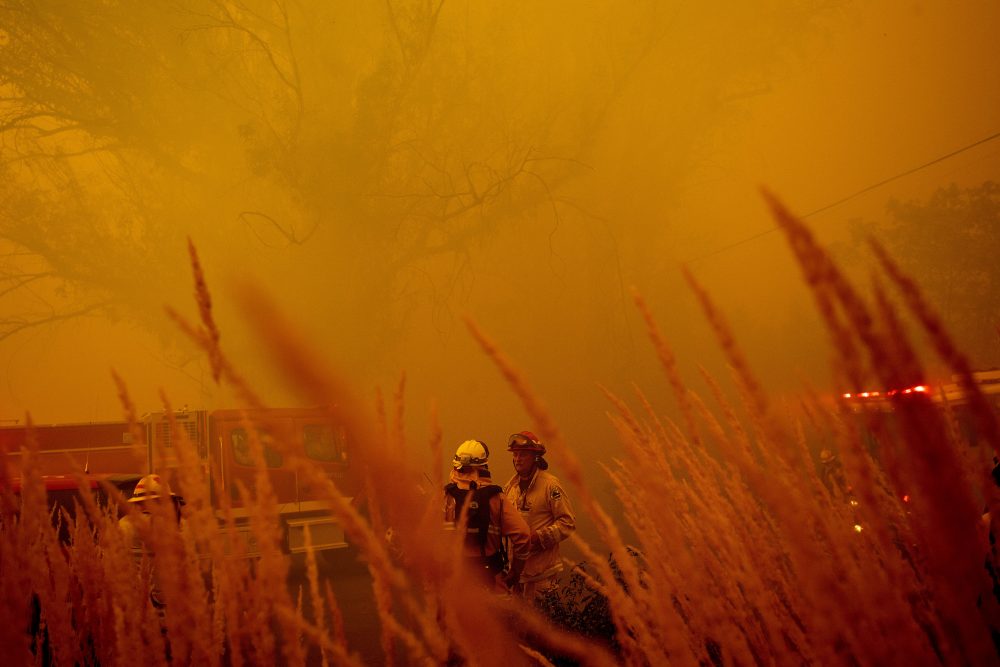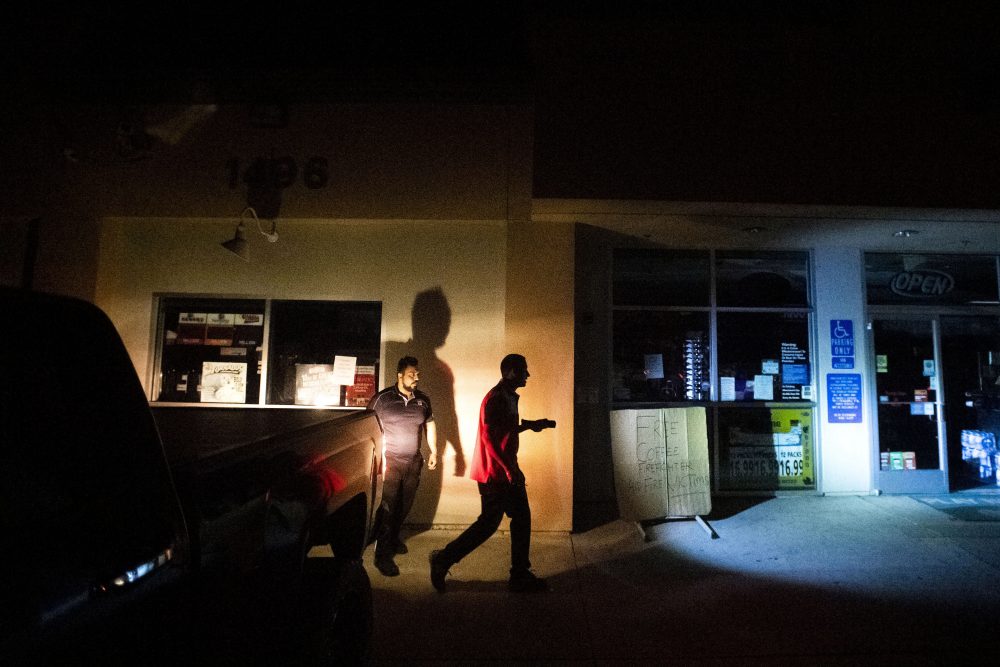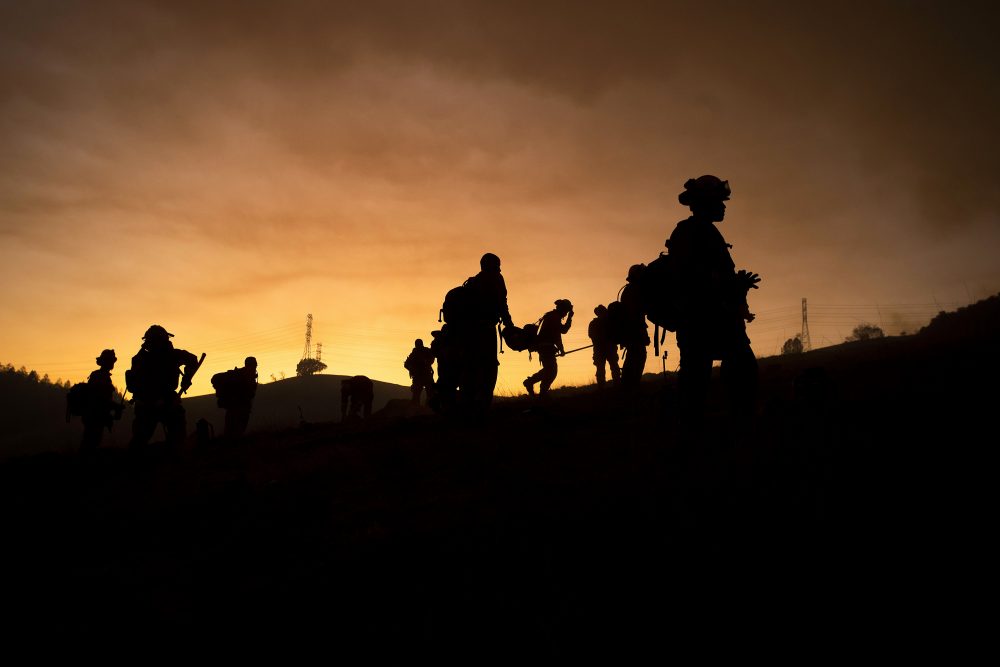SANTA ROSA, California — California’s governor declared a statewide emergency Sunday after officials ordered nearly 200,000 people to leave their homes as hurricane-force winds drove multiple wildfires through bone-dry vegetation. Meanwhile, the state’s largest utility cut electricity to millions of residents as a precaution to prevent more areas from igniting.
Gov. Gavin Newsom said in a statement that officials were deploying “every resource available” to respond to the wildfires, including a large blaze in Northern California’s wine country powered by gusts that reached more than 102 mph.

Flames from the Kincade Fire consume Soda Rock Winery on Sunday in Healdsburg, Calif. Noah Berger/Associated Press
In the San Francisco Bay Area, two grass fires briefly halted traffic on a bridge. The flames came dangerously close to homes in Vallejo. Another grass fire closed a stretch of interstate that cut through the state capital as smoke obstructed drivers.
In the south, a wildfire in the Santa Clarita area near Los Angeles destroyed 18 structures. As of Sunday, the Tick Fire was 65 percent contained.
The biggest evacuation was in Northern California’s Sonoma County where 180,000 people were told to pack up and leave.
To prevent its power lines from sparking in the high winds and setting off more blazes, Pacific Gas & Electric shut off power to 2.3 million people across 36 counties this weekend. Electricity is expected to be restored by Monday, though the utility warned it might cut power again as soon as Tuesday because of another forecast of strong winds that are expected to last until Wednesday.
The fear that the winds could blow embers and spread fire across a major highway prompted authorities to expand evacuation orders that covered parts of Santa Rosa, a city of 175,000 that was devastated by a wildfire two years ago.
“This is the largest evacuation that any of us … can remember,” the Sonoma County Sheriff’s Office tweeted Sunday morning. “Take care of each other.”
Hundreds of people arrived at the Sonoma County Fairgrounds in Santa Rosa by Sunday. Some came from senior care facilities. More than 300 people slept inside an auditorium filled with cots and wheeled beds. Scores of others stayed in a separate building with their pets.
Among them was Maribel Cruz, 19, who packed up her dog, four cats and fish as soon as she was told to flee from her trailer in the town of Windsor, which is about 60 miles north of San Francisco. She also grabbed a neighbor’s cat.
“I’m just nervous since I grew up in Windsor,” she said. “I’m hoping the wind cooperates.”

Firefighters from Dry Creek Rancheria remove an American flag Sunday as the Kincade Fire bears down on Healdsburg, Calif.. (AP Photo/Noah Berger) Noah Berger/Associated Press
Sonoma County Sheriff Mark Essick urged residents in the evacuation zone that stretched from the wine country to Bodega Bay on the coast to get out immediately, citing the 24 lives lost when fire swept through the region in October 2017.
“Although I’ve heard people express concerns that we are evacuating too many people, I think those concerns are not valid at this point,” Essick said at a news conference Sunday, noting that the winds pushed fire toward the towns of Healdsburg and Windsor overnight.
The Healdsburg area lost one of its historic attractions to the flames Sunday when embers carried by the winds sparked a blaze that engulfed the Soda Rock Winery whose buildings included a general store and post office founded in 1869. The winery was about 10 miles outside the town of Healdsburg.
The Kincade Fire began Wednesday night and was only 10 percent contained Sunday morning, the California Department of Forestry and Fire Protection. It has burned 47 square miles and has destroyed 79 structures.
In the San Francisco Bay Area, winds toppled trees and knocked out power to areas where the utility had not shut off power. The gusts knocked over a 30-foot tree at a farmers’ market in Martinez, injuring nine people, including a toddler. Six were taken to a hospital but the injuries were not life-threatening, police said.
During the 2017 fires, winds gusting up to 90 mph lasted for about 12 hours. This time, the gusts were stronger and expected to last over 36 hours, ending Monday night, said Matt Mehle, a meteorologist with the National Weather Service’s Monterey office.
The windy conditions could potentially blow embers and spark fires up to a mile away. Fire officials said they feared that if the Kincade Fire crosses U.S. 101, it could ignite an area that hasn’t burned in 80 years.
“The fuel in that area is extremely dense, they’re extremely old and dry,” said Steve Volmer, a fire behavior analyst with CalFire.
 Woodbridge firefighter Joe Zurilgen passes a burning home Sunday as the Kincade Fire rages in Healdsburg, Calif.. (AP Photo/Noah Berger) Noah Berger/Associated PressThe parched vegetation from the unseasonably hot weather and low humidity was already igniting various spots elsewhere, and firefighters were scrambling to keep up.
Woodbridge firefighter Joe Zurilgen passes a burning home Sunday as the Kincade Fire rages in Healdsburg, Calif.. (AP Photo/Noah Berger) Noah Berger/Associated PressThe parched vegetation from the unseasonably hot weather and low humidity was already igniting various spots elsewhere, and firefighters were scrambling to keep up.
Two grass fires shut down a 6-mile stretch of Interstate 80, including a bridge between the cities of Crockett and Vallejo, and forced the evacuation of 200 people from California State University Maritime Academy. An ember from one fire possibly sparked the other.
Smoke from another grass fire Sunday forced the closure of a stretch of Interstate 80 running through Sacramento’s downtown.
The city of Vallejo said the power blackout shut off its pumping station needed to access its well water, prompting a water emergency. The city is barring residents from watering their yards and asking people to limit bathing and flushing toilets, according to The Vallejo Reporter.
Many residents said they feel exasperated.
“It has brought a lot of anxiety,” said Cody Rodriguez, 20, who lived for a week at a Santa Rosa shelter during the 2017 fires and checked into a Napa County shelter on Sunday. “I was like ‘I don’t want to go through this again.'”
Daisy Nguyen and Janie Har in San Francisco, Christopher Weber in Los Angeles and Julie Watson in San Diego contributed to this report.
Comments are not available on this story.
Send questions/comments to the editors.

